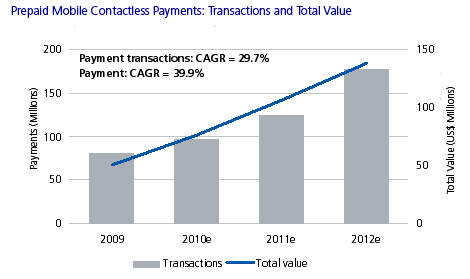Mobile Contactless Payments in South Korea: A Recipe for Future Success?
Abstract
Buoyed by continued growth, South Korea’s mobile contactless payments market will enjoy average compound annual growth rates in the realm of 50 percent.
In a new report, Mobile Contactless Payments in South Korea: A Recipe for Future Success?, Celent offers an analysis of trends and prospects for South Korea’s mobile contactless payments market. The report looks at the product lineups that are driving the market and issues looming on the horizon that market participants will have to face.
Years of work to pioneer the market are finally beginning to translate into growth. Since around 2009, the mobile contactless payments market has surged to life with mobile carriers and Korea Smart Card Co. (KSCC) collaborating to aggressively roll out the Mobile T-money service. In addition, in 2010 Hana SK Card, a joint venture between Hana Card and SK Telecom, was launched, energizing the mobile credit card market.

“With this innovation afoot, the prospects for growth are bright, but there are obstacles that must be overcome and potential pitfalls that must be avoided,” says KyongSun Kong, analyst with Celent's Asian Financial Services Group and author of the report.
Growth of the mobile contactless market in South Korea hinges on a number of factors, including increased penetration of mobile phones with RF antennas, the spread of mobile contactless payment processing terminals, and new services that differentiate this payment method from conventional cards, and synergies through interoperability
“While the country has yet to clear these hurdles to growth, 2010 has seen a number of new services announced, and it is clear that the mobile contactless payments market is continuing to evolve,” adds Kong.

